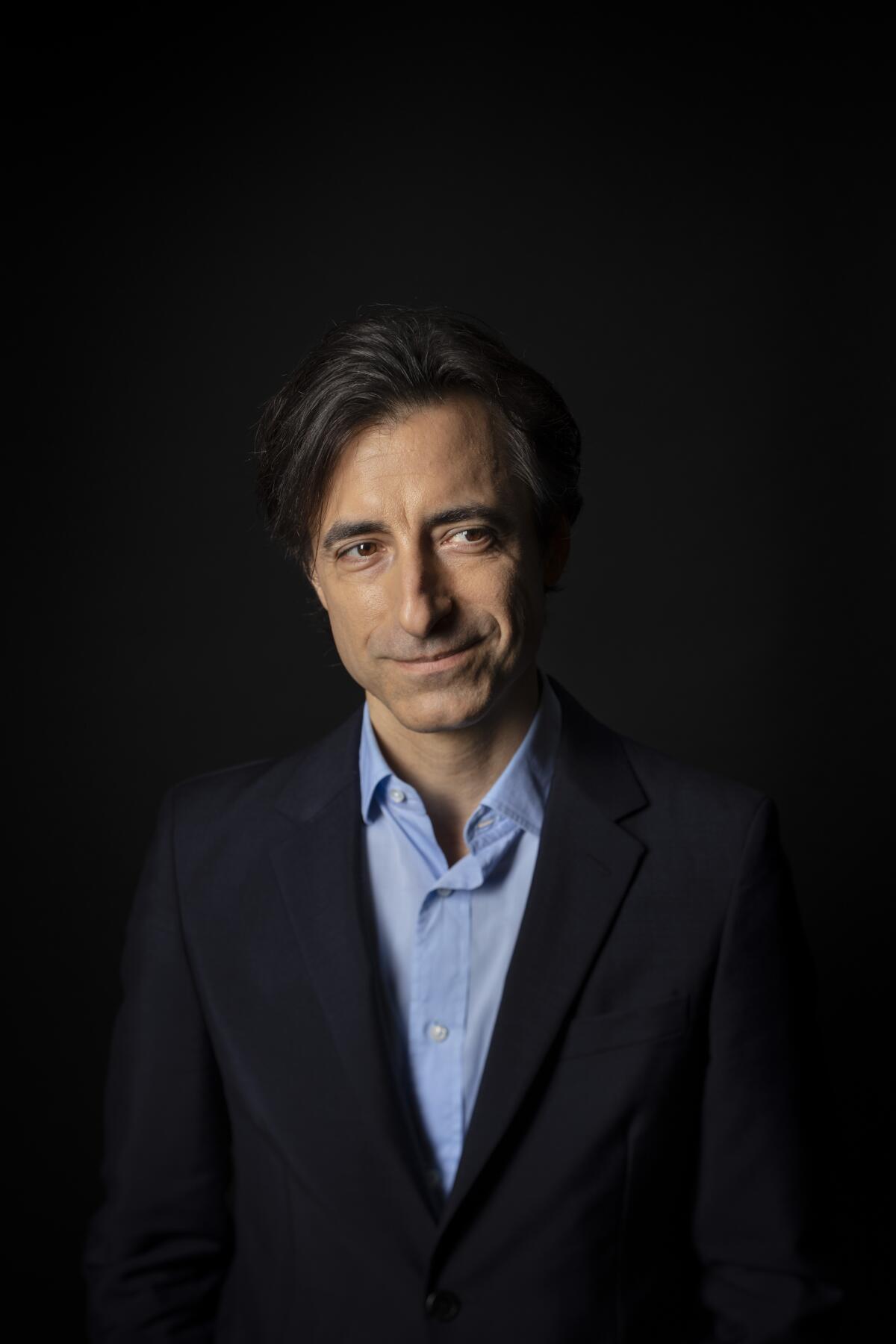Why Noah Baumbach’s ‘Marriage Story’ ‘really was like setting up a dance of some sort’

- Share via
There is a moment in Noah Baumbach’s “Marriage Story” when Nicole and Charlie, the couple in question played by Scarlett Johansson and Adam Driver, have a dramatic showdown in Charlie’s recently rented L.A. apartment. It’s a layout that will be quite familiar to Angelenos: the late ’60s, early ’70s design where the kitchen and living area, as Baumbach notes, form almost a “split screen.” The New York-based filmmaker knew what he wanted, but occupancy rates turned out to be an issue for the production.
“It was harder to find that location than to find a child actor,” Baumbach jokes. “We rehearsed in the apartment, and we blocked the whole thing out exactly, down to the close-ups, because I knew what line I was going to cut when we got into the tighter close-ups.”
That scene, which was shot over two days in a Hollywood apartment building, is arguably the climax of Baumbach’s heartbreaking opus about a love affair that inevitably falls apart. The court case between the separated couple is taking a dark turn and, at this moment during the film, Nicole stops by to try to keep the situation from becoming any worse. For Baumbach, this sequence was so important he blocked the 11-page scene as intricately as for an action movie.
“I have photos of them I actually just sent to them recently. I was, like, ‘This is how it began,’” Baumbach recalls. “They’re just sitting in chairs in a rehearsal space.”
Baumbach adds, “[It was] just getting the language down, because all the [dialogue] overlaps are all scripted too. Everything is kind of rhythmically there. It really was like setting up a dance of some sort for them.”
The writer and director best known for “Frances Ha” and “The Squid and the Whale” says the idea for “Marriage Story” had been gestating for quite some time. But it was his increasingly frequent collaborations with Driver — this is their fourth movie together — that spurred a finished screenplay.
“We’ll have five or six things [we’re talking about] that maybe is a thing,” Baumbach says. “‘Wouldn’t it be cool if you were this in this world, or that world?’ He’ll send me a photograph, or he’ll send me a message, ‘What about this?’ It could be just a visual, or it could be a whole idea of a plot.”
Coincidentally, Baumbach had also known Johansson for a little bit and had been wanting to find something to do together. Collaborating with Driver and him seemed like a good pitch. And, as Baumbach makes clear, it was an “open conversation” with the actors that allowed him to flesh out their characters.
“They were both so candid about not only their relationships, lives — in Scarlett’s case, her divorces — but just about the movie in general,” Baumbach says. “Adam had the idea of a theater company and the notion of performance, the idea of, like, the profession of the character and the relationship between him and Scarlett, but also it brought all this notion of performance to the movie. And we talked a lot about theater and movies.”
That being said, Baumbach cast a wide net to try to convey universal truths about what has become an age-old process.
“I was simultaneously doing research and talking to people, friends who’ve gone through divorces on both sides. The women and the men, and professionals, judges and lawyers,” he says. “I think when I gave them the scripts, I don’t know what they expected exactly. I think they didn’t know really what was in it, but my hope was that they recognized it already, that it would feel familiar in a way, that they would know their way through it even though they didn’t necessarily know what was coming.”
Of course, many in the industry will see similarities in the film’s marriage to Baumbach’s own union with actress Jennifer Jason Leigh, which officially ended in 2013. Like the couple on screen, Leigh was older than Baumbach, they had one son and she returned to Los Angeles after the couple had lived in New York together for a number of years. Baumbach doesn’t discount the similarities but sees “Marriage Story” as something else altogether.
“It’s a good question, and I get versions of it on most of my movies, and I understand why people have it, because I do draw on reality and my experience for my fiction,” Baumbach says. “Philip Roth has this quote, ‘I rub two stones of reality together to spark the imagination.’ When he said it, I recognized immediately what he’s describing. It is everyday experience that I find cinematic, and I’m compelled to find cinematic language for things that I’ve gone through, or things that other people have gone through, people around me have gone through. And to find expression of it.”
Still, Baumbach says, it’s all invention and wouldn’t work otherwise. He notes, “What I’m always trying to do is, both with the actors in their performances and also in the writing stage, is keep a kind of emotional presence going at all time. It’s like we all censor ourselves. So, [I] try to be as open and honest as I can, but that doesn’t necessarily mean personal truth. It’s kind of narrative truth.”
More to Read
Only good movies
Get the Indie Focus newsletter, Mark Olsen's weekly guide to the world of cinema.
You may occasionally receive promotional content from the Los Angeles Times.










